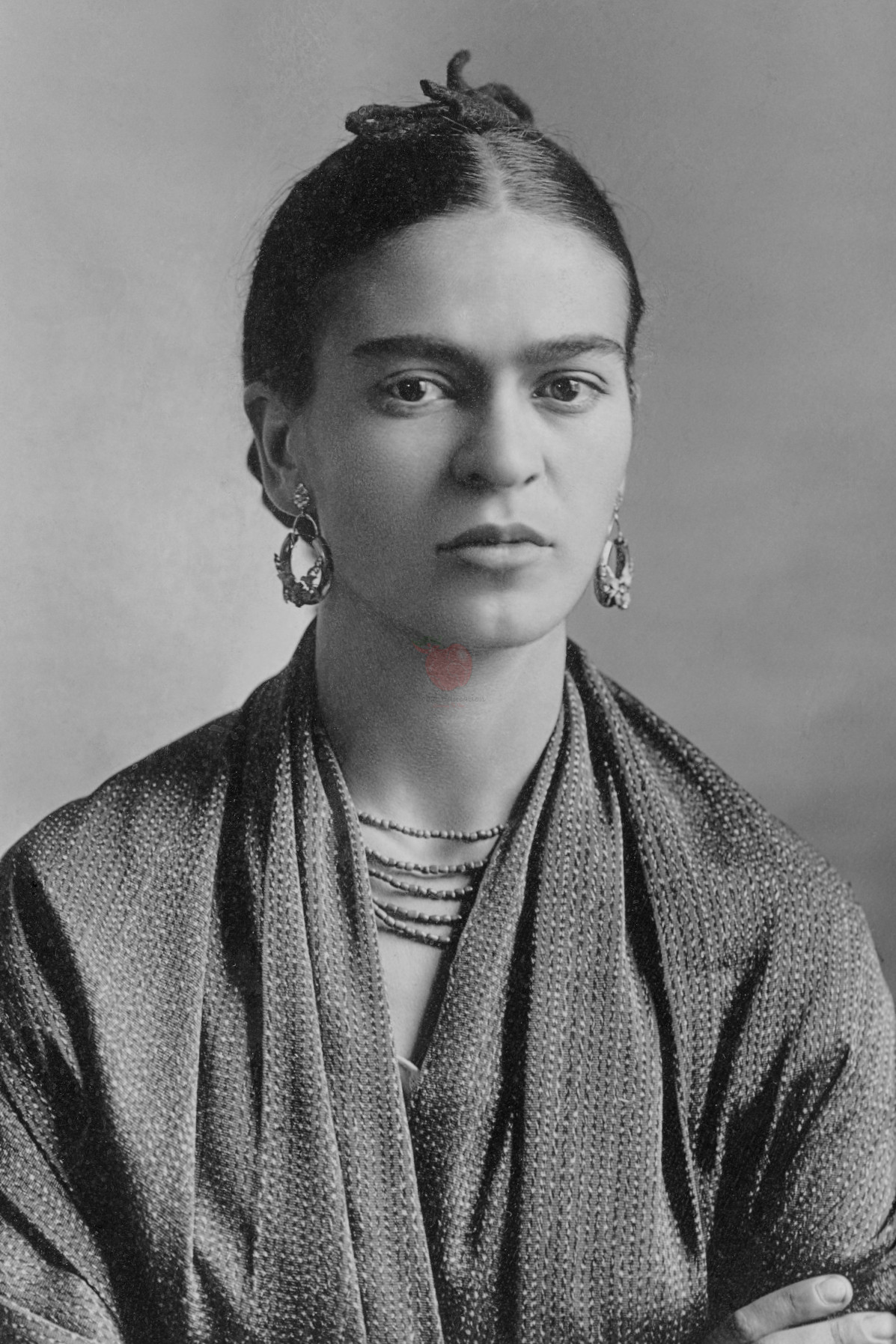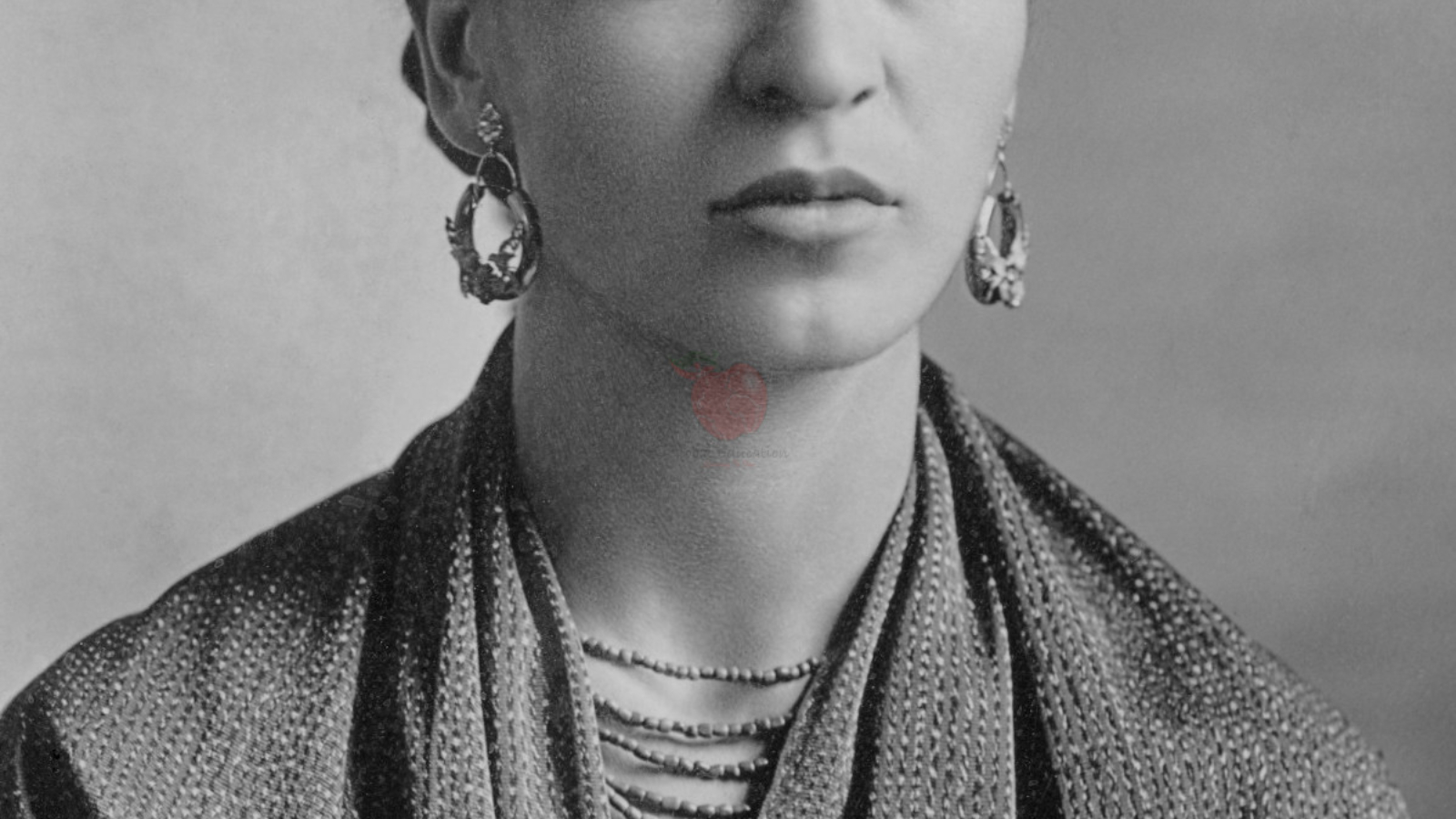
An artist who transformed vulnerability into power. Best known for the raw honesty of her self-portraits throughout her lifetime of physical suffering and the defiance of Western cultural norms in promoting indigenous Mexican culture in particular and underdogs in general. She was married to artist Diego Rivera for twenty-five years.
Pain is an inseparable part of Frida Kahlo’s identity. Physical and emotional pain were the canvas of her life. At age six, she contracted polio which left right leg noticeably shorter and thinner than her left leg. She spent several months in bed and, in the aftermath, experienced teasing from other children for her “peg leg”. At eighteen, she incurred multiple injuries from an accident with a trolley car including a broken right leg and foot, multiple spine injuries as well as pelvic and abdominal damage from being pierced by a metal handrail that pierced her pelvis and exited through her vagina. All of her pregnancies ended in spontaneous miscarriages or medical abortions. She spent three months confined to a bed where with the help of her mother, she began drawing the self-portraits for which she is widely known and recognized.
Though it did not figure prominently in her early childhood, she was born with spina bifida, a condition where the spine and spinal cord do not develop properly in the womb. The condition was not discovered until 1930 when she was twenty three years old (Valmatas, 2013). Her physical pain persisted throughout her life, but she did not allow it to stop her from living life to the fullest.
Having spent so much time confined to a bed and through so many grueling ailments and treatments, Frida settled into acceptance of herself as she was. She embraced her appearance for what it was. She did not seek to conform to the popular dictates of what makes a woman beautiful, particularly those of Western culture. She accepted her now iconic thick eyebrows and visible facial hair as well as her physical impairments and the constancy of her pain, fatigue and discomfort. She did not edit out any part of her physical self. In a world where appearances and now “likes” are everything, Frida Kahlo declared through her work, “This is who I am…”. She did so without apology, without shame, and without excuses. She did not present herself despite her disfigurement and frailties or anything else. She presented herself as fully human on any given day. She said of herself, “I paint self-portraits because I am so often alone, because I am the person I know best.” Frida Kahlo had one true and abiding love relationship in her life and that was with Diego Rivera. They were married for twenty five years before her death at 47. Their relationship was complex and tumultuous “...strong personalities, rampant infidelities, and issues of infertility…” (Ishtak, 2020). Each had their own rather public sexual exploits during the marriage. It is well documented by each of them that their love for one another was deep, passionate, and sustaining on many levels, if not traditional. She referred to him as my “love of a thousand years” (Tibol,1993). Being no stranger to suffering, solitude and otherness, Frida identified with the underdogs of society - the indigenous, the poor, the suffering, and the discarded.
She was a fierce critic of imperialism, dictatorship, and inequality. She championed indigenous Mexican culture over European standards or style, beauty and in defining the limits of acceptability. She lived her beliefs. She wore traditional Mexican dresses and depicted herself in Mexican dress in her art, clinging to her mother’s indigenous Mexican background (Tibol,1993). She elevated the story of her country, and by extension, the Global South, to the world.
In every aspect of her life Frida Kahlo persevered and pushed through the limitations imposed by ruling social convention. It is not the seeming immunity to her own condition that was heroic. It was the way she acknowledged her own physical, mental, and emotional frailties - eyes wide open - as integral parts of herself.

